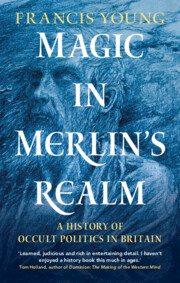Book contents
- Magic in Merlin’s Realm
- Reviews
- Frontispiece
- Magic in Merlin’s Realm
- Copyright page
- Dedication
- Contents
- Plates
- Preface
- Introduction
- 1 ‘Britain Indulges in Magic’
- 2 The Secrets of the King
- 3 Arthurian Dynasty
- 4 House of the Unicorn
- 5 Politics and the Decline of Magic, 1649–1714
- 6 Emanations of Albion
- Conclusion
- Bibliography
- Index
- Plate Section (PDF Only)
- References
- Magic in Merlin’s Realm
- Reviews
- Frontispiece
- Magic in Merlin’s Realm
- Copyright page
- Dedication
- Contents
- Plates
- Preface
- Introduction
- 1 ‘Britain Indulges in Magic’
- 2 The Secrets of the King
- 3 Arthurian Dynasty
- 4 House of the Unicorn
- 5 Politics and the Decline of Magic, 1649–1714
- 6 Emanations of Albion
- Conclusion
- Bibliography
- Index
- Plate Section (PDF Only)
- References
Summary

- Type
- Chapter
- Information
- Magic in Merlin's RealmA History of Occult Politics in Britain, pp. 345 - 368Publisher: Cambridge University PressPrint publication year: 2022



